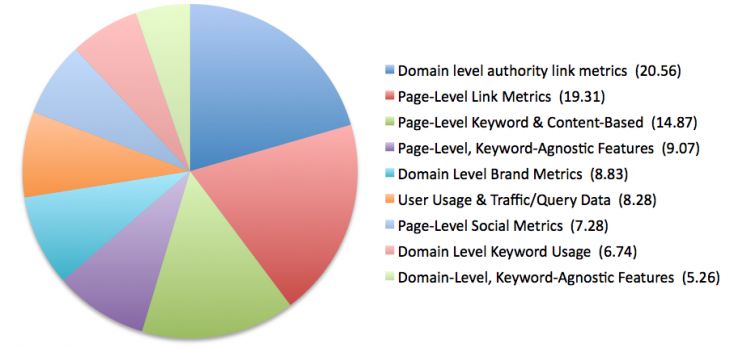As part of our SEO module, it’s important to understand how search engines such as Google rank websites for search queries and all of the ranking signals that they use.
The Important of Backlinks in Google’s Search Algorithm
When Google was founded back in 1998, they revolutised the search industry by introducing backlinks as a main ranking signal. Google treated backlinks similar to references and citations in an essay.
This helped them categorise web pages into relevance and authority. For example, if the BBC News website linked to a blog then it was a positive signal that the blog was important and should rank well in the search results.
SEO Ranking Factors in 2014
Even though Google claims to use more than more than 200 ranking factors in their search algorithm, backlinks are still of critical importance.
In fact, in February 2014 Matt Cutts released a video that said they tried to build an internal search algorithm that didn’t use backlinks but it just didn’t work – the overall quality of results suffered. Here’s the video below:
Although backlinks remain the single biggest most important ranking signal, Google still relies heavily on 100s of other ranking signals that many SEOs have commented on.
Thankfully, Moz.com releases an annual survey and report on the most important ranking factors in SEO.
According to the latest SEO ranking factors report, which can be read here, links are still the most important ranking factor followed by keywords, content, brand metrics and domain-level keyword usage.
The full results are outlined below:

As you can see, backlinks (40%) are still a huge part of the ranking algorithm, however their importance has been reducing steadily over the years. For example, in the 2009 SEO rankings report links made up around two-thirds (66%) of the SEO algorithm.
WikiWeb’s Top 10 Most Important Search Engine Ranking Signals:
- Page-Level Authority (Backlinks and Anchor Text to Specific Web Page)
- Domain Level Authority (Domain Age and Backlinks to Website as a Whole)
- Title Tags
- Content Quality and Keywords
- Domain-Level Brand Metrics (e.g. social signals, navigational search queries for brand name)
- User Data (e.g. user experience, Click Through Rate (CTR%), bounce rate and traffic volume – higher traffic pages tend to rank higher)
- Internal Links
- Website Load Speed
- Ratio of Ads to Content on Page
- Mobile Responsiveness
Because there are so many additional factors that make up small chunks of the search engine algorithm we thought it would be useful to link to Backlinkco.com’s Complete Ranking Factors List who have provided a list of 200+ possible ranking factors that Google might be using.
Some of the latest ranking signals that Google has confirmed it uses in 2014 includes mobile responsiveness and website load speed. With the introduction of Google Plus and the personalization of search, it’s also likely that your personal behavior and websites that you frequently visit will influence your own search results.
High Correlation of Social Signals with Search Engine Rankings
It’s also worth mentioning that time and time again social signals (including +1s and Facebook Shares) share the highest correlation with search engine rankings. You can see proof of this in SearchMetrics.com 2013 rankings correlation report.
Although this is largely considered to be correlation without causation (especially when Matt Cutts has come out confirmed that Google doesn’t use social signals in its ranking algorithm) it does give you a clue as to the type of pages and websites that rank well in SEO.
